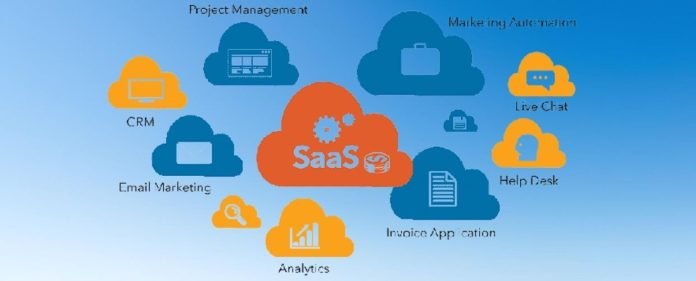In today’s fast-paced digital landscape, where innovation is the norm, and businesses demand agility and efficiency, Software as a Service (SaaS) has emerged as a revolutionary paradigm. It represents a transformative shift in software delivery and accessibility, offering businesses a cost-effective, scalable, and flexible solution to meet their software needs. This comprehensive article delves deeper into the world of SaaS, exploring its definition, an array of benefits, potential challenges, and its far-reaching impact on industries and enterprises across the globe.
Understanding SaaS
At its core, SaaS – an acronym for Software as a Service – is a cloud computing model that delivers software applications over the internet. Third-party providers host and maintain applications, unlike traditional software installations, which require downloading and installing on individual computers or servers. Users gain access to the Software through a web browser, often subscribing to a payment plan based on usage, features, or user count.
Key Benefits of SaaS
Software as a Service offers a range of key benefits that make it an attractive option for businesses of all sizes.
- Cost-Effectiveness: One of the most compelling advantages of Software as a Service is its cost-effectiveness. It eliminates the need for hefty upfront investments in hardware and software licenses. By subscribing to applications on a pay-as-you-go basis, businesses significantly reduce capital expenditures and lower their total cost of ownership, making software solutions more accessible to organizations of all sizes.
- Scalability: SaaS solutions are innately scalable, aligning seamlessly with a business’s growth trajectory. As a company expands, it can effortlessly add more users, features, or services without grappling with the complexities of procuring and configuring additional infrastructure.
- Accessibility and Mobility: The flexibility of manifests in its accessibility. Applications are reachable from any device with an internet connection, liberating users from the confines of physical workstations. This mobility empowers remote work, fosters collaboration, and bolsters productivity by enabling users to work globally.
- Automatic Updates and Maintenance: SaaS providers are responsible for maintenance, updates, and security patches. It ensures that users always have access to the latest features and enhancements without requiring manual intervention from the user’s end.
- Rapid Deployment: Rapid deployment is a hallmark of applications. Businesses can have these applications up and running in hours or days, starkly contrasting to traditional software implementations that often entail weeks or months of preparation. This agility enables businesses to respond swiftly to market demands and capitalize on emerging opportunities.
- Global Reach: The software solutions possess a global reach, enabling businesses to transcend geographical barriers and serve customers in diverse regions without setting up local infrastructure. It fosters international expansion and market diversification.
Challenges and Considerations
While SaaS offers many benefits, it also has specific challenges and considerations.
- Data Security: Entrusting sensitive business data to a third-party provider sparks concerns about data security, privacy, and compliance with regulations like the General Data Protection Regulation (GDPR).
- Integration Complexity: Integrating applications with existing on-premises systems or other tools can be intricate, often necessitating customized solutions to ensure smooth data flow and interoperability.
- Vendor Lock-In: Shifting from one provider to another can be arduous due to the deep integration of data and processes into the platform, potentially leading to vendor lock-in.
- Customization Limitations: SaaS applications may offer a different level of customization than traditional on-premises Software. It could limit a business’s ability to tailor solutions to unique operational requirements.
SaaS and Industry Transformation
SaaS has engendered transformative effects on various industries.
- Enterprise Software: Crucial business functions like customer relationship management (CRM), human resources (HR), and enterprise resource planning (ERP) have undergone revolutionary changes due to SaaS. Companies leverage to streamline operations, enhance customer experiences, and optimize resource allocation.
- Collaboration and Communication: SaaS tools geared towards collaboration, communication, and project management have revolutionized how teams work. These tools facilitate seamless remote work, enhance team productivity, and foster innovation.
- E-Commerce: SaaS-based e-commerce platforms have empowered businesses to establish and manage online stores without extensive technical expertise. This democratization of e-commerce enables companies of all sizes to tap into the global digital marketplace.
- Education and Learning: The education sector has witnessed a transformational shift through software solutions. Online learning platforms, digital classrooms, and interactive educational tools have disrupted traditional educational paradigms, making learning more accessible and engaging.
- Healthcare: SaaS applications have left a significant imprint on the healthcare industry. Software solutions have redefined healthcare delivery from electronic health records (EHR) management to telemedicine and patient engagement, enabling efficient patient care and communication.
The Future of SaaS
The trajectory of SaaS points toward continued growth and innovation.
- AI and Machine Learning: SaaS applications are expected to increasingly incorporate artificial intelligence (AI) and machine learning (ML) capabilities. This integration will bring forth predictive analytics, automation, and personalized user experiences, further enhancing the value proposition of SaaS.
- Vertical SaaS: Industry-specific software solutions tailored to various sectors’ unique needs will continue gaining traction. These specialized solutions will cater to the distinct requirements of industries like healthcare, finance, manufacturing, and more.
- Edge Computing: As edge computing gains prominence, its services will extend to edge devices. It will enable real-time processing and analysis of data closer to its source, delivering faster insights and responses.
- Serverless Computing: Serverless architectures will simplify the deployment and management of applications. This approach optimizes resource utilization, reduces operational overhead, and enables developers to focus on crafting exceptional user experiences.
Conclusion
SaaS has ushered in a profound transformation in how businesses access, deploy, and leverage software. With their unparalleled advantages of cost-efficiency, scalability, and accessibility, they have emerged as a powerful catalyst for innovation and growth across industries. As technology evolves and businesses increasingly prioritize flexibility and efficiency, It is poised to play an even more pivotal role in shaping the future of business operations.
SaaS continues to pave the way toward a more agile, interconnected, and prosperous digital landscape by enabling organizations to harness the power of Software without the complexities of traditional infrastructure and maintenance.



